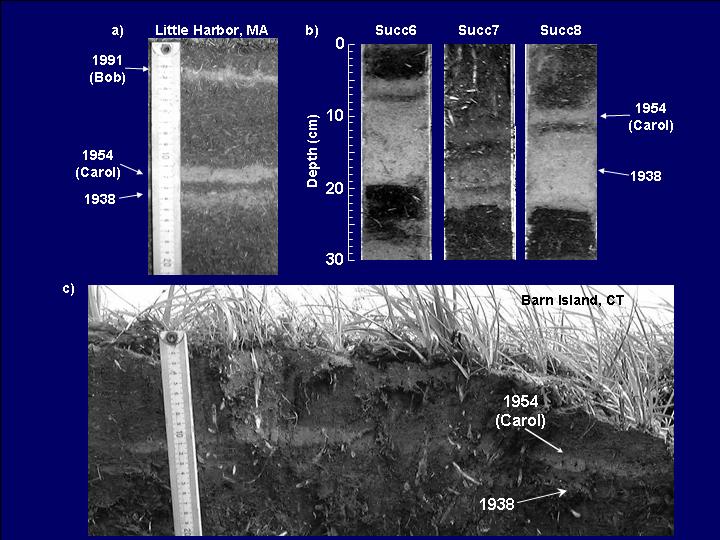Scientist Jeffrey Donnelly, of the Coastal Systems Group at the Woods Hole Oceanographic Institution (WHOI), is looking closely at the mess left by hurricane storm surges--not the mess left by Katrina on the Gulf Coast, but the mess left in the New York City area. He has found not just one, but at least ten layers of sand left behind by likely hurricanes in the last seven hundred years.
Dr. Donnelly hopes to reconstruct the history of intense storms in the Southern New England and Long Island by looking at the deposits left by land-falling hurricanes and storm surges in backbarrier salt marshes and kettle ponds found at different heights throughout the area. So far, his group has found sand layers that correspond to the known great storms of 1991, 1954, 1938, 1893, 1788 and 1693 AD. Many additional layers indicate prehistoric storms that date back to 1642–1477, 1434–1347, 1316–1257, and even to 1190–1034 AD and earlier.

While considered rare in the New York City area, land-falling hurricanes have likely occurred many times throughout the past ~3500 years. With six severe storms, likely hurricanes, in the past 700 years, the frequency of land-falling hurricanes in the New York City area is equal to that of southern Rhode Island, and higher than that of southern New Jersey. Initial findings suggest that alternating periods of frequent and infrequent hurricane activity have occurred in the past, possibly tied to changes in climate. The times of high hurricane activity in western Long Island are 3500–3050 years before present (BP) and 2200–900 BP, nearly synchronous with high activity observed in the Caribbean and northern Gulf Coast.
Estimates of past storm strengths and frequencies are extremely valuable to researchers trying to tease out the influence of human activities on climate.
No comments:
Post a Comment